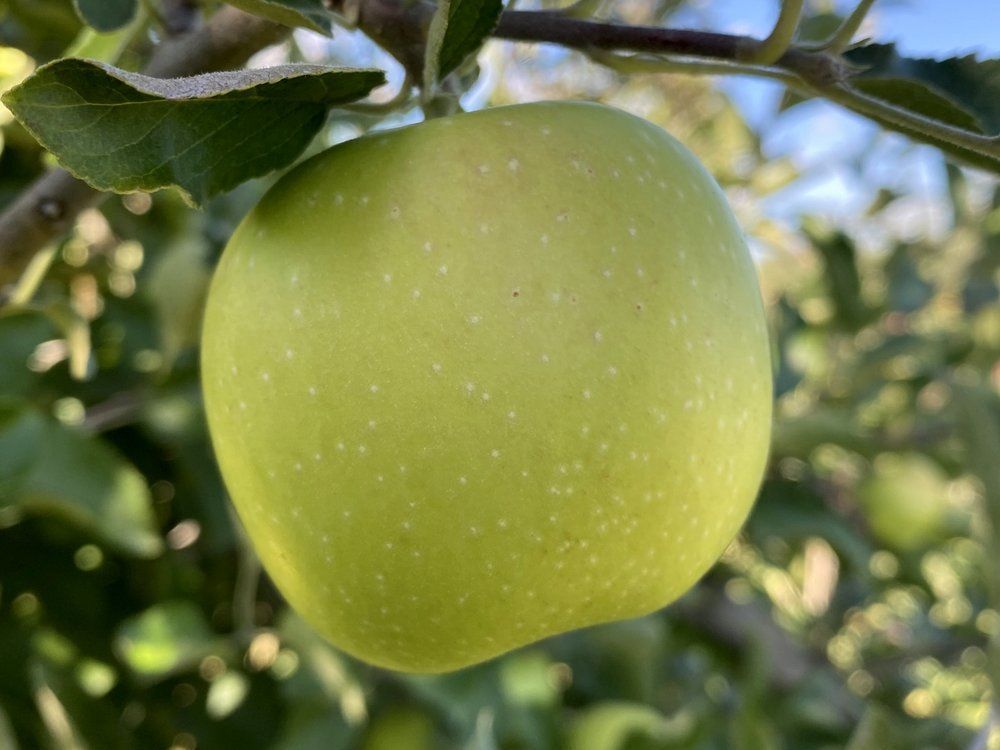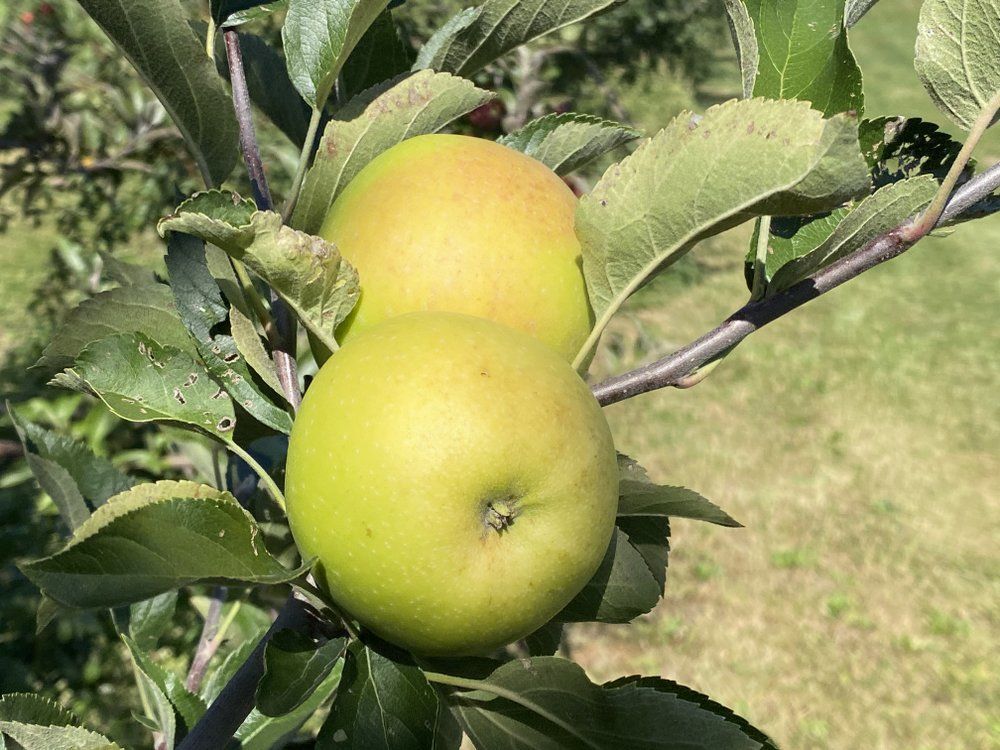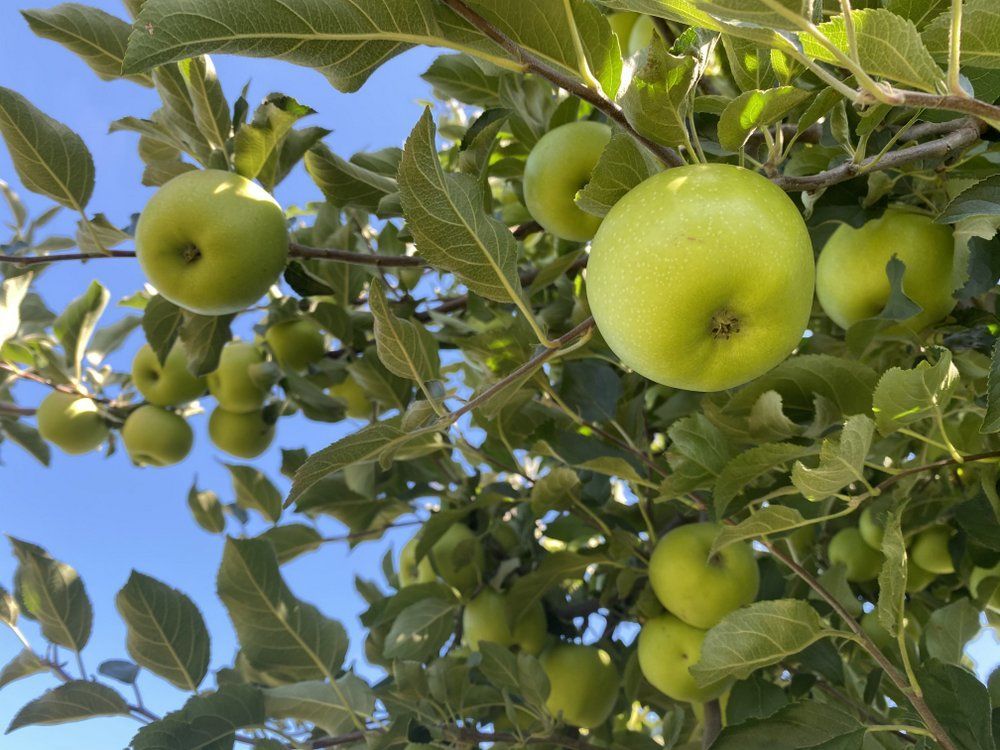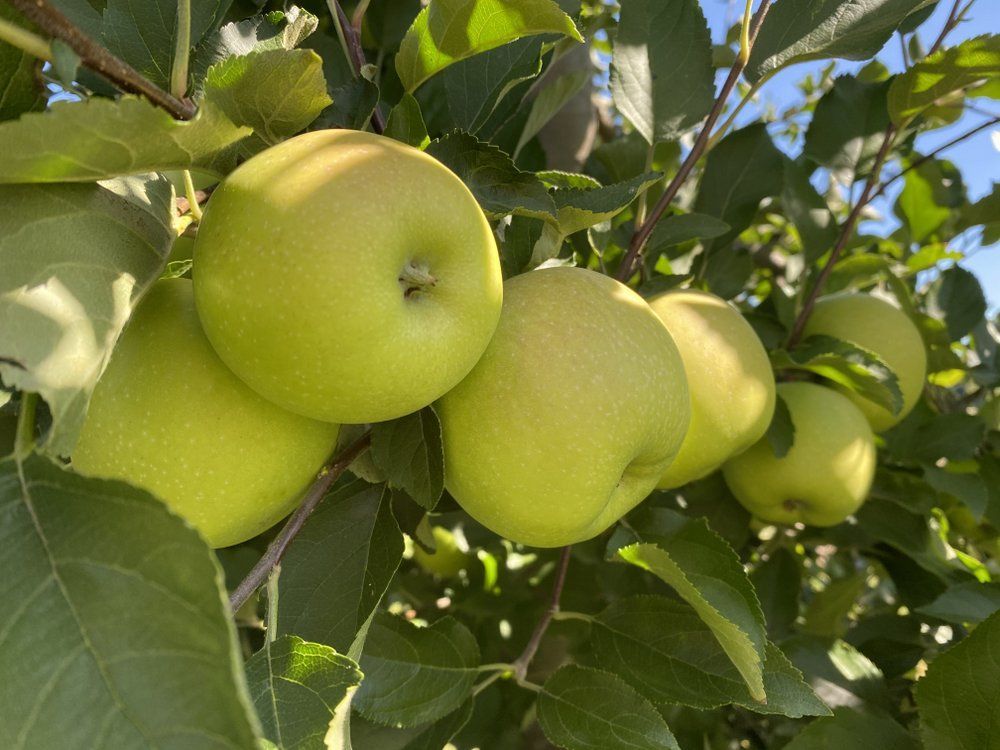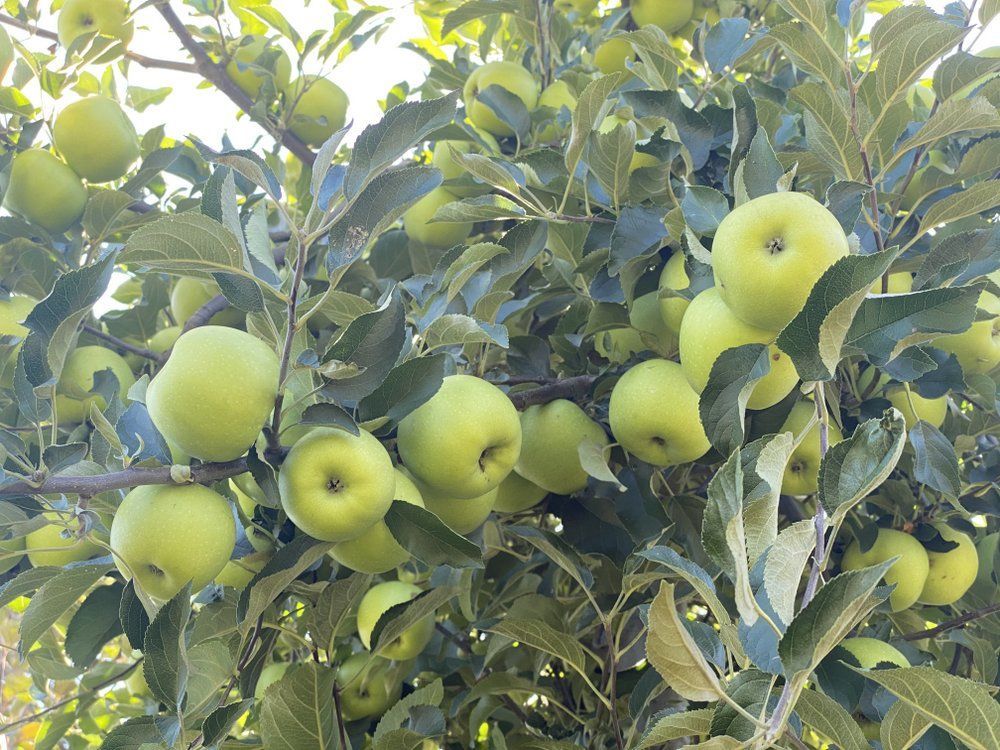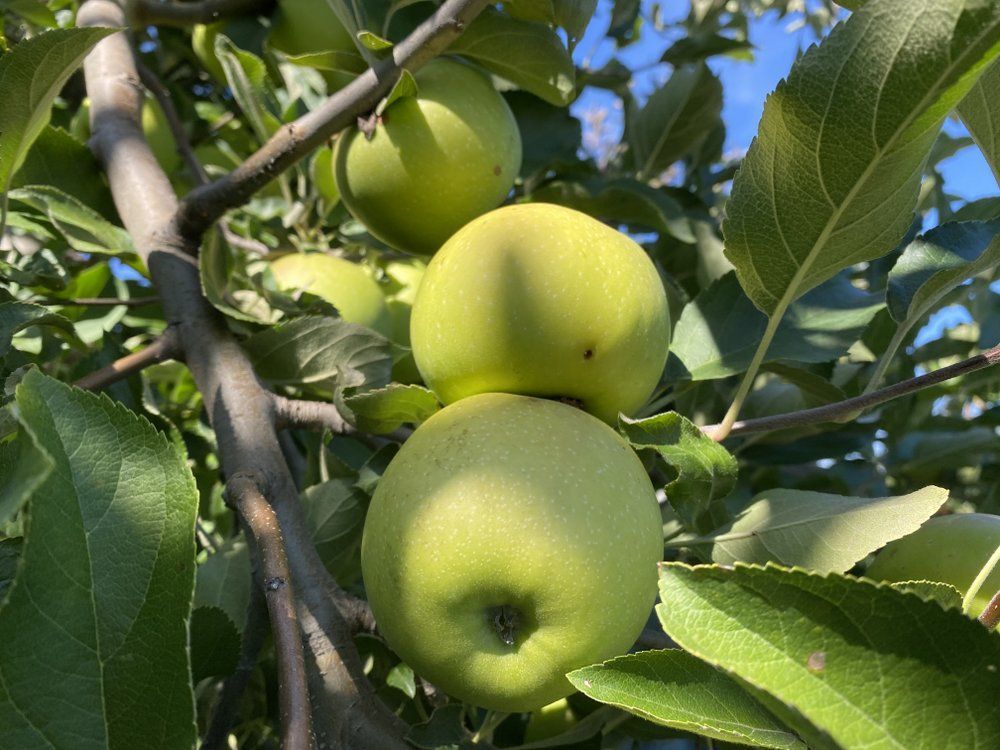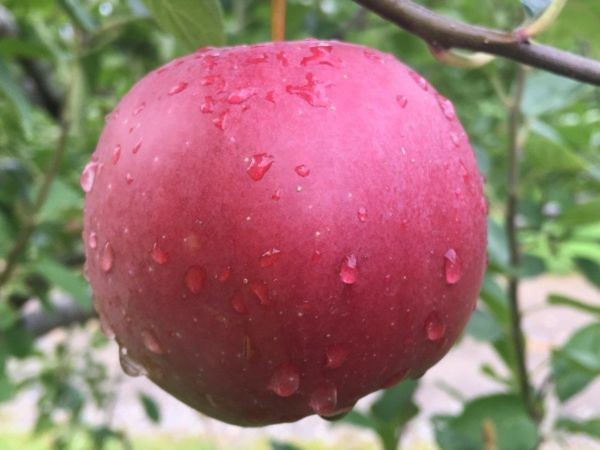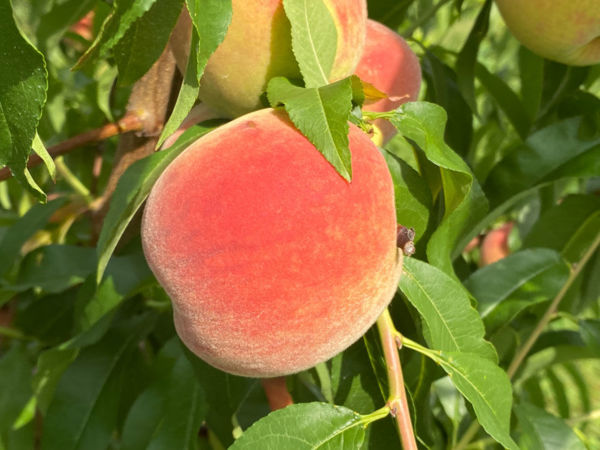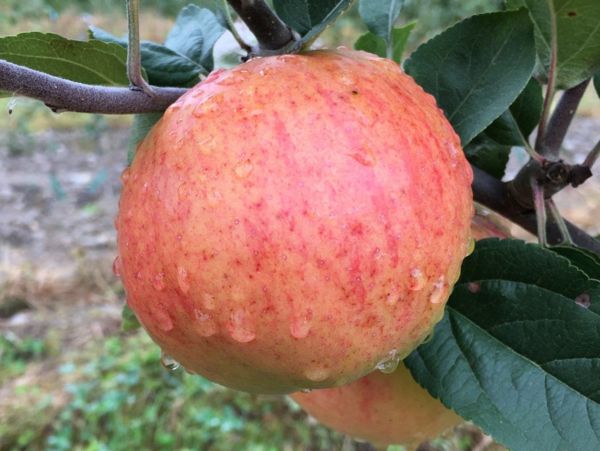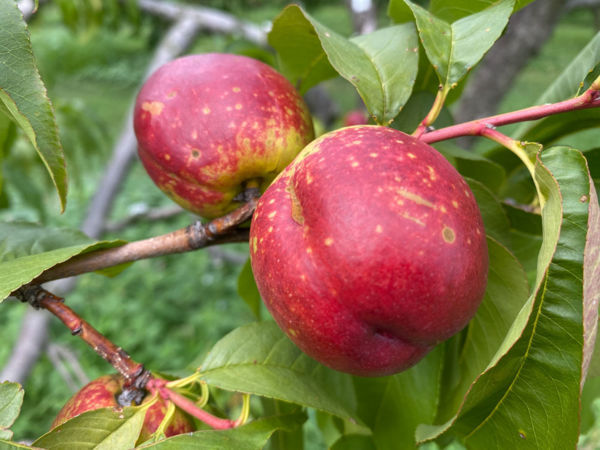An attractive, highly disease-resistant apple, ideal for organic growers.
Grimes Golden Apple on G.210 (Spring 2025)
You are viewing a tree that will ship in Spring 2025. You can also find trees for Spring 2024.
An outstanding yellow dessert apple, the tastier ancestor of Golden Delicioius. Also known as Grimes, Grimes Golden Pippin, Grimes'.
A great backyard tree, Grimes is vigorous and self-fertile (though crops will be improved by a pollenizer), and it is resistant to scab, powdery mildew, fireblight, and cedar-apple rust. It is susceptible to collar rot, and bitter pit, and it tends to overcrop. It needs to be thinned to maintain good fruit size, but it is a reliably annual bearer. This tree has a very long bloom period, and some growers consider it a universal pollenizer.
The fruit is medium-to-large, slightly oblong, and sometimes ribbed. It is speckled with yellow or russet lenticels. The skin is a bit tough, sometimes scruffy, but the flesh is snappily crisp and fine grained. This apple is almost certainly the parent of Golden Delicious, and, as you would expect, is very sweet. But is has an aromatic balance that Golden Delicious lacks, and many tasters describe it as spicy, pointing to notes of nutmeg and pepper. Grimes is a dessert apple of the highest quality, and it also is a winner in the kitchen. It stores for several months–during which time the yellow of ifs skin will deepen–and its hardy exterior make it a great farmstand apple. Traditionally, this was also a popular apple among cider makers. In Apples of North America, Tom Burford notes that old still sites in the Blue Ridge Mountains are often surrounded by Grimes Golden trees. (From WSU: "Tannin (percent tannic acid): 0.07; Acid (percent malic acid): 0.61; pH: 3.45; SG: 1.052; oBrix 12.2.")
The exact origin of Grimes is not clearly known, but Beach (Apples of New York) states that fruit from the original tree was being sold to New Orleans traders as early as 1804. Grimes Golden enjoyed popularity in the south, and my great grandfather, Omer Cummins, planted 20 acres of Grimes on his property in Illinois at the turn of the century, a commitment that reflects the popularity of the variety at the time.
The Fruit
Fruit Type
Category: Apple
Subcategory:
Heirloom, Cider, Hot-Climate
Fruit Uses & Storage
Uses: fresh eating, cider, baking, storage, sauce
Cider classification: sharp
Storage duration: three plus months (approximate, depending on storage conditions)
Fruit Appearance
Skin color: yellow
Flesh color: cream
Fruit Origins
Parentage: unknown
Origin: West Virginia or Ohio
Introduced in: pre-1804
Introduced by:
The Environment
Calendar & Geography
USDA zones: 5 - 8
Chill hours: Not yet determined
Ripening date: Oct 06 (approximate, in New York State) + 21 days after McIntosh
Tree Height & Spacing
glossary
Rootstock: G.210 Rootstock
Rootstock size class: Semi-Dwarf (40% of Standard)
Tree spacing (natural spread of tree): 12'
Good for wildlife planting? N
Diseases & Pests
glossary
Fireblight: Resistant
Powdery Mildew: Resistant
Apple Scab: Resistant
Cedar-Apple Rust: Resistant
Phytophthora (Collar Rot, Crown Rot, Root Rot): Susceptible
Bitter Pit: Very Susceptible
Pollination
Pollination Factors
glossary
Bloom group: 2
Is it self-fertile? Y
Is it fertile? Y
Ploidy: Diploid
Rootstock size class:
Semi-Dwarf (40% of Standard)
Pollination Partners
This table shows the first few results from a full search for pollenizers of Grimes Golden Apple on G.210. Please see our Pollenizer Search to run other queries and read how the application uses various factors. Also read more about fruit tree pollination.
See all pollination matches for Grimes Golden Apple on G.210
Featured Products
A few things we're loving right now...
A full-flavored, freestone white peach.
A traditional semisharp cider apple from Spain.
A widely-grown, large, yellow-fleshed nectarine.









